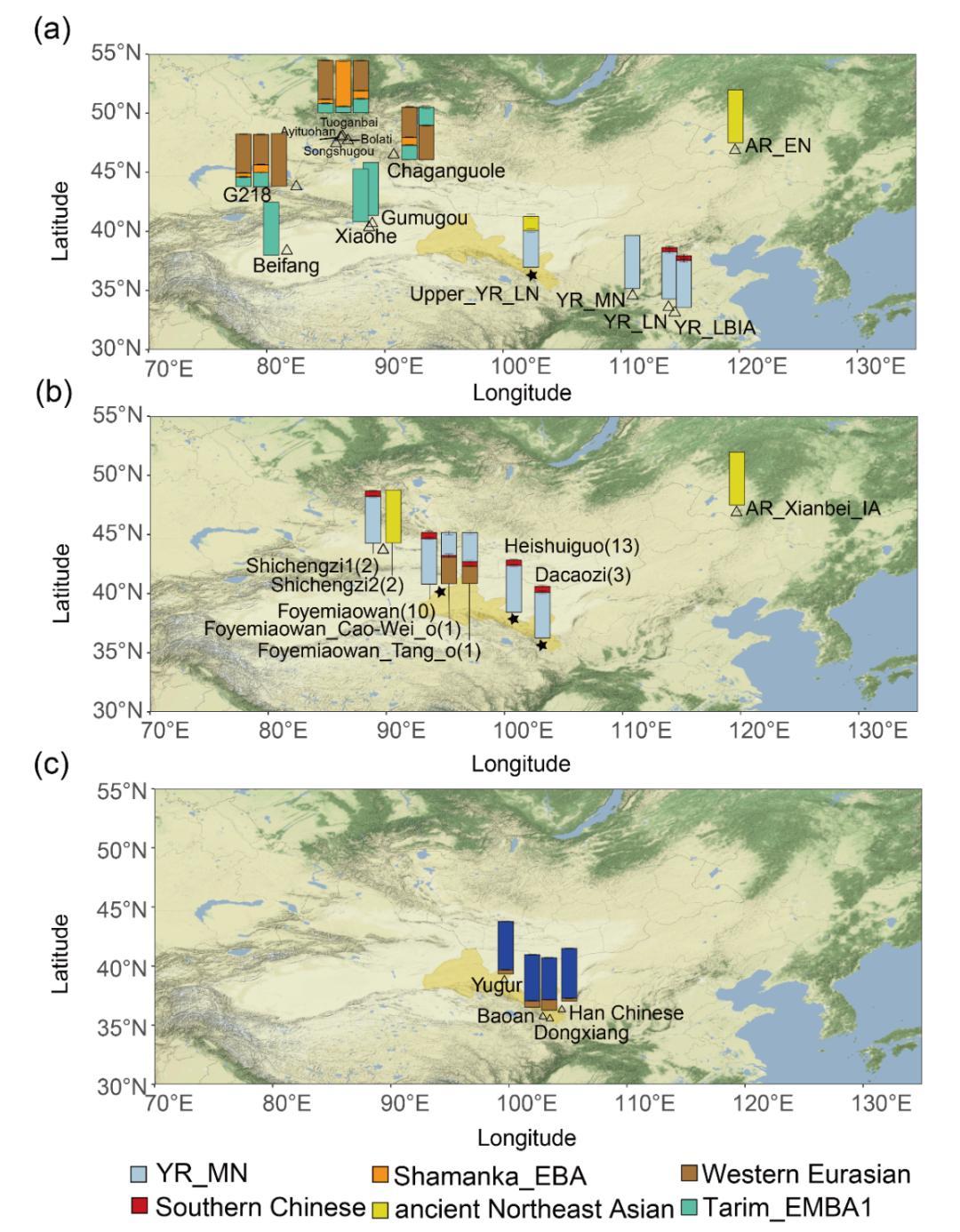CGTN
Source - China reveals first Wes t-East hybrid population from ancient Dunhuang - CGTN
 An illustration shows the demographic components of the Hexi Corridor in northwest China. /Fudan University
An illustration shows the demographic components of the Hexi Corridor in northwest China. /Fudan University
The Hexi Corridor, a critical part of the ancient Silk Road in northwest China, has for millennia served as a crossroads for interactions between the East and the West for civilization communications and connectivity.
However, due to the lack of ancient DNA data, the population dynamics in the Hexi Corridor across a longer tranche of time have been gravely under-represented.
To address the limitations, a group of Chinese scientists recently reconstructed the genetic history of the population there through comparative analysis of ancient genomes, confirming the influence of major historical events on the population in the region by means of sci-tech archaeology, said Wen Shaoqing, a deputy professor from the Institute for Archaeological Science of Fudan University.
For the first time, Chinese scientists have revealed the genetic landscape of the Western-Eastern admixture population pattern of ancient Dunhuang in the Hexi Corridor.
The population genetics analysis was carried out by integrating the published data of the ancient genome of the Hexi Corridor and its surrounding population with the whole genome single nucleotide polymorphisms (SNPs) chip data of modern humans.
The relevant research results are entitled "Inferring the demographic history of Hexi Corridor over the past two millennia from ancient times" and published in the Science Bulletin on December 16.
Chinese researchers from China's Fudan University, Xiamen University and the Gansu Provincial Institute of Cultural Relics and Archaeology participated in the study.
West-East admixture population
According to the study, previous studies have revealed the details of cross-continental material and cultural transmission as early as the Bronze Age.
Materials and technologies exchanged along the ancient Silk Road included East Asian millet and painted pottery, West Asian wheat and barley, bronze metallurgy, domesticated sheep, horses and cattle.
To date, paleogenomic studies have examined the genetic structure of the eastern Hexi Corridor and neighboring populations, such as northern China, the western regions (present-day Xinjiang Uygur Autonomous Region), the Tibetan Plateau and Mongolia for these formative Neolithic and Bronze Age periods, said the study.
To some degree, the observed mixed East Eurasian-West Eurasian ancestry is unsurprising given Dunhuang's international importance from the Han Dynasty (220 BC–8 AD) to the Tang Dynasty (618–907 AD), experiencing the arrival of merchants from further west and the introduction of Buddhism during these centuries, said the researchers.
Their activities were materially immortalized in the Dunhuang Grottes art and thousands of documents in multiple languages unearthed at Dunhuang caves.
The Chinese scientists used the ancient genome data of 25 individuals from the Han Dynasty and the Eastern Jin (317–420 AD) to the Tang Dynasty in the Hexi Corridor for population genetics analysis.
Uniparental or limited autosomal studies have shed some light on demographic interactions in the east, center and far west of the historical Hexi Corridor, and genome-wide SNPs studies revealed the genetic landscape of Western-Eastern admixture pattern of the present day Hexi Corridor, according to the study.
In the study, the researchers found two West-East admixture individuals from the Dunhuang Foyemiaowan cemetery, dating from the Cao-Wei (220–265 AD) to the Tang dynasties, with their West Eurasian ancestry components as high as 30 percent and 50 percent, respectively.
In addition, the two were buried in the mass cemetery, indicating that these mixed-race descendants were not treated differently by their families, reflecting the openness and inclusiveness of the Dunhuang civilization of the ancient Silk Road, said the researchers.
Through the analysis of the whole-genome SNP chip data of modern humans, the research team found that the current population in the Hexi Corridor is a mixture of ancestry related to Western Eurasian people and people from local historical periods, with the ancestral component of West Eurasia accounting for about 5 to 20 percent, according to the study.